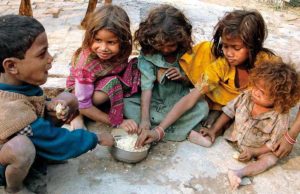
It is rightly said that the dark cloud has a silver lining. The bigger picture may appear grim but there is also a ray of hope. While the State of Food Security and Nutrition in the world report shows the possibility of global hunger situation, the estimated number of undernourished people around the world in 2019, at almost 690 million, has gone up by 10 million from the previous year, the findings for India show that there has been some improvement too. Over 10 years there has been a significant decline in the number of Indians affected by hunger along with stunted children declined by 60 million. This is a significant achievement for a nation like India, which was ranked 102 out of 117 countries on the Global Hunger Index, as recently as last year. The report is seen as the result of the long term economic growth, reduced inequality and better access to basic goods and services.
This means that certain efforts to reduce starvation problems such as the midday meal programme are slowly bearing fruit. But still the question that arises is, “Can India now rest depending on the fact of being a food-secure nation?”
The answer to this question cannot be simply one. The primary reason for this is starvation – a vast section of Indian citizens are still beyond the ambit of nutrition and food security. There had been several incidents regarding this problem but there was no official acknowledgment of those problems from either the state or the Centre. This indicates a deeper problem at the structural level. For instance, the mass digitization initiatives by the government in the name of the welfare of the people actually reduce the scope of access to food, especially for the poor.
But the government is seldom held responsible. Moreover, the report has also found the adult obesity in India has been on the rise. The number of obese Indians shot up from 25.2 million in 2012 to 34.3 million in 2016. This problem of malnourishment is mainly the result of faulty consumption patterns and bohemian lifestyle of the urban people because food hurdles are not the main problem in cities. Thus there is a dual problem, the lack of food in the hinterland and the nature of consumption in cities. To address this twin problem the government should shift the focus to not only plugging the leakages to the Indian food distribution system but also educating people – on the importance of the consumption of healthy foods and support local, traditional cuisines.
Courtesy : Deyasini Sardar @Random ideas

